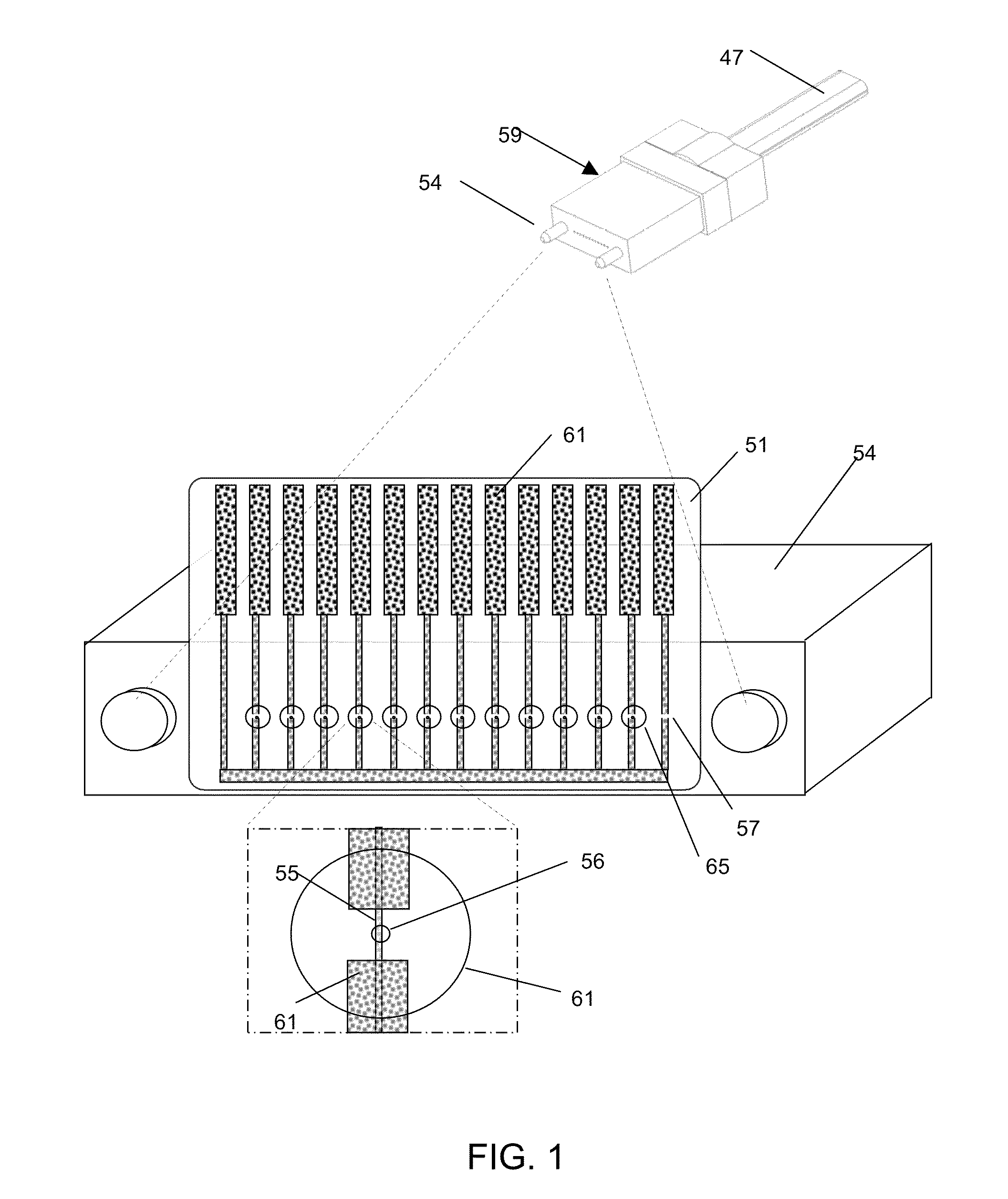In-line fiber optic monitors responsive to optical intensity
a fiber optic monitor and fiber optic technology, applied in the field of optical systems, can solve the problems of affecting the performance affecting the safety of the active fiber, and so as to reduce the loss of power inherent, reduce the risk of affecting and improve the safety of the active fiber.
- Summary
- Abstract
- Description
- Claims
- Application Information
AI Technical Summary
Benefits of technology
Problems solved by technology
Method used
Image
Examples
example application
Automated Network Monitoring
[0071]In a further example, the unique features of this detector element enable optical intensity, and by extension, optical power, to be measured through fiber optic junctions in a low cost fashion. This fundamental hardware component enables advanced self-monitoring and self-diagnosing network architectures can be realized for Fiber-to-the-Home networks and data centers, in which automation is applied to improve operational efficiencies and service quality / response. FIG. 9 illustrates in block diagram form an automated network management system with integral optical monitors 52 associated with each fiber optic interconnection 42. Through suitable electronic calibration, the optical monitors 52 disclosed herein produce an analog voltage proportional to throughput optical power. These analog signals are time multiplexed onto one or more analog-to-digital conversion ports. The resulting digital data packets represent the optical power reading and the physi...
PUM
 Login to View More
Login to View More Abstract
Description
Claims
Application Information
 Login to View More
Login to View More - R&D
- Intellectual Property
- Life Sciences
- Materials
- Tech Scout
- Unparalleled Data Quality
- Higher Quality Content
- 60% Fewer Hallucinations
Browse by: Latest US Patents, China's latest patents, Technical Efficacy Thesaurus, Application Domain, Technology Topic, Popular Technical Reports.
© 2025 PatSnap. All rights reserved.Legal|Privacy policy|Modern Slavery Act Transparency Statement|Sitemap|About US| Contact US: help@patsnap.com



